How is it that we can experience joy and heartbreak at the same time. How can we navigate that space so as not to drown in the heartbreak?
We live in a world that can sometimes feel overwhelming with challenges and pain, it’s easy to feel helpless when the difficulty seems too great. The difficulty can seemingly obliterate anything that happens to be good in our lives.
In my personal practice I have found the practice of Tonglen to be highly beneficial.
What Exactly is Tonglen?
Tonglen is an ancient Tibetan Buddhist meditation practice that’s incredibly relevant for our modern lives. The word “Tonglen” literally means “taking and sending” or “giving and receiving”. At its core, it’s a practice of intentionally breathing in suffering and breathing out relief.
It might sound a little counter-intuitive at first – why would we want to invite pain in? Our normal tendency is to hold onto the good and keep away from the bad. But Tonglen reverses this, helping us give away the good and welcome the bad in a transformative way. And we aren’t actually breathing in the pain. We are imagining the difficulty being lifted away and breathed in to an imaginary transformer that is bright and pure at the heart, where it is metamorphosed into the energy of compassion, kindness and love.
The Benefits of Practicing Tonglen
This practice offers a wealth of benefits that can truly change how you experience life and connect with others:
- Cultivating Compassion: Tonglen teaches us to do the opposite of our natural aversion to pain. By consciously breathing in suffering (our own or others’), we start to break down those walls of habitual self-preservation and open our hearts in a truly expansive way. It helps us develop an unconditional compassion that goes beyond our immediate circle.
- Transforming Fear and Anxiety: A lot of our anxiety comes from resisting what is difficult. Tonglen is a direct antidote! By repeatedly breathing in what we usually reject, we gradually become less sensitive to fear, learning that we’re strong enough to meet discomfort head-on without being overwhelmed. It builds inner spaciousness and resilience.
- Dissolving Self-Preoccupation: One of the deepest teachings is that much unhappiness stems from being overly focused on “me” and “my interests”. Tonglen directly challenges this by actively diminishing our self-preoccupation when we breathe in the suffering of others. It helps us reclaim the huge amount of energy tied up in our patterns of resistance and aversion, breaking down walls between ourselves and life. This shifts us from a narrow “me-first” view to a more inclusive “we” consciousness.
- Enhancing Emotional Resilience: Life inevitably brings challenges. Tonglen helps us develop a tender yet robust resilience, allowing us to stay present with difficult emotions without being consumed by them. It’s like building emotional muscle, enabling us to hold space for pain and let it move through us rather than getting stuck.
- Cultivating Deep Connection: In a world that can sometimes feel isolating, Tonglen reminds us of our shared humanity. When we practice breathing in the suffering of all beings, we connect to a vast ocean of common experience, dissolving feelings of loneliness and separation. It reinforces the truth that we all want to be happy and free from suffering, connecting us to a common humanity.
- Uncovering Your “Soft Spot”: This practice puts us in touch with our tenderness and vulnerability, uncovering what Pema Chödrön calls our “soft spot” – the birthplace of genuine compassion. By risking opening our hearts to pain, we can soften ourselves and become more loving and open.
How to Practice Tonglen
You can begin with a simple version of Tonglen to get a feel for its power:
- Settle and Ground: Find a comfortable position and connect with your natural breath. You might place your hand on your heart as a gesture of self-soothing and bring to mind your compassionate self.
- Focus on Suffering: Bring to mind a specific area of suffering. This could be your own pain, the pain of a loved one, or a broader issue you see in the world.
- Breathe In Suffering (Tong): As you breathe in, imagine you are lifting away the dark, heavy, or hot quality of that suffering – perhaps visualising it as a dark cloud or smoke. Imagine your heart has turned into a transformer and breathe the suffering in and immediately the bright light of compassion can burn it up like fuel, strengthening your capacity for compassion and wisdom. Remember we are not actually taking in the suffering to our own body.
- Breathe Out Relief (Len): As you breathe out, imagine sending out a cool, clear, bright quality of relief. Visualise it as brilliant light, fresh air, healing love, warmth, energy, confidence, or joy to the person or situation you’re focusing on.
- Repeat and Expand: Continue this cycle, gently expanding your focus from a specific individual to wider groups, and eventually to all living beings everywhere.
Remember, if imagining a dark cloud feels too strong, you can simply focus on the flow of feeling: opening to the pain on the in-breath, letting it touch your heart, and then opening on the out-breath, giving out feelings of spaciousness and care. If you find yourself feeling blocked or numb, gently make those feelings the focus of your practice.
Tonglen on the Spot: Integrating into Daily Life
The beauty of Tonglen is that you can practice it anywhere, anytime! This “on-the-spot” practice can be incredibly effective.
- For Others: If you’re walking down the street and notice someone in pain or distress, don’t just close down. Let their humanity touch you. On the in-breath, breathe in their distress with the wish that they be free of suffering. On the out-breath, send them warm wishes and feelings of happiness. If their pain triggers fear or resistance in you, then do Tonglen for those feelings within yourself.
- For Yourself: Let’s say you’ve missed a train and feel irritated and upset. On the in-breath, imagine drawing into your own irritation all the frustration of others who are also angry about late transport. Imagine it’s transformed in your heart, and then breathe out relief for that frustration on the out-breath. This helps counteract the tendency to contract inwards around our own distress.
By practicing Tonglen, we actively open up to discomfort and resistance, drawing it towards us rather than pushing it away. It helps us work through our own blocks and resistances, allowing us to relate to changing life situations in a fresh and open way.
If you are interested in learning more, the practice of Tonglen is part of our Compassion Training and we have a dedicated weekend to the practice of Tonglen at Samye Ling 24-26 October – https://www.mindfulnessassociation.net/course/tonglen-weekend/
This video talks about the course.
You might like to try this mini practice of Tonglen
Jacky Seery


